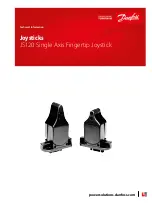
© MOOG 2019
This document is subject to MOOG INTELLECTUAL AND PROPRIETARY INFORMATION LEGEND . The details are on page II.
51
MRJ06301
2-3-3. FUNCTIONS
It is used to select the function screen displayed in the editing area shown in Figure 2-6. The contents of
the function are as follows.
F1 Profile
Controls the parison wall profile and other related functions (When start up the control-
ler, first move to this screen)
F2 Marker
Set program point marker.
Slope setting for die gap and start slope.
Time setting of internal clock.
PURGE / TOOLING target position setting
F3 File
Allows storage and retrieval of 100 container wall thickness programs and related func-
tions
F4 Monitor
Display status of digital signal and current value of servo valve current and die gap
position. Manual operation is also done on this screen.
F5 Data
Displays the profile point and related function data
SHIFT→F1
Set Up Mode
– Provides die gap tooling and other machine related set up functions
SHIFT→F2
Analog monitor assignment to monitor channels.
SHIFT→F3
Delete and Backup/Restore the storage data. (Backup/Restore for data in USB)
SHIFT→F4
Machine primary setting setup
SHIFT→F5
Communication parameter setting RS422 and Ethernet. And Inter clock time setting
2-3-4. STATE MONITORING AREA
In the status monitoring area shown in Figure 2-6, it is used to indicate the state of the function as shown
below.
Start
Lights when the cycle Start signal is received
Die Gap
Lights when the Die Gap signal is received and “DIE GAP” on the LCD is
back lit
Continuous
Lit when the “Continuous Extrusion” machine type is selected
Accumulator
Lit when “Accumulator” machine type is selected
Divergent
Lit when “Divergent” die gap tooling is selected
Convergent
Lit when “Convergent” die gap tooling is selected
End of filling
Lights when the accumulator completes its charging stroke
Point Out
Lights when each Marker point is reached
End of extrusion
Lights when the accumulator completes its empty stroke
















































